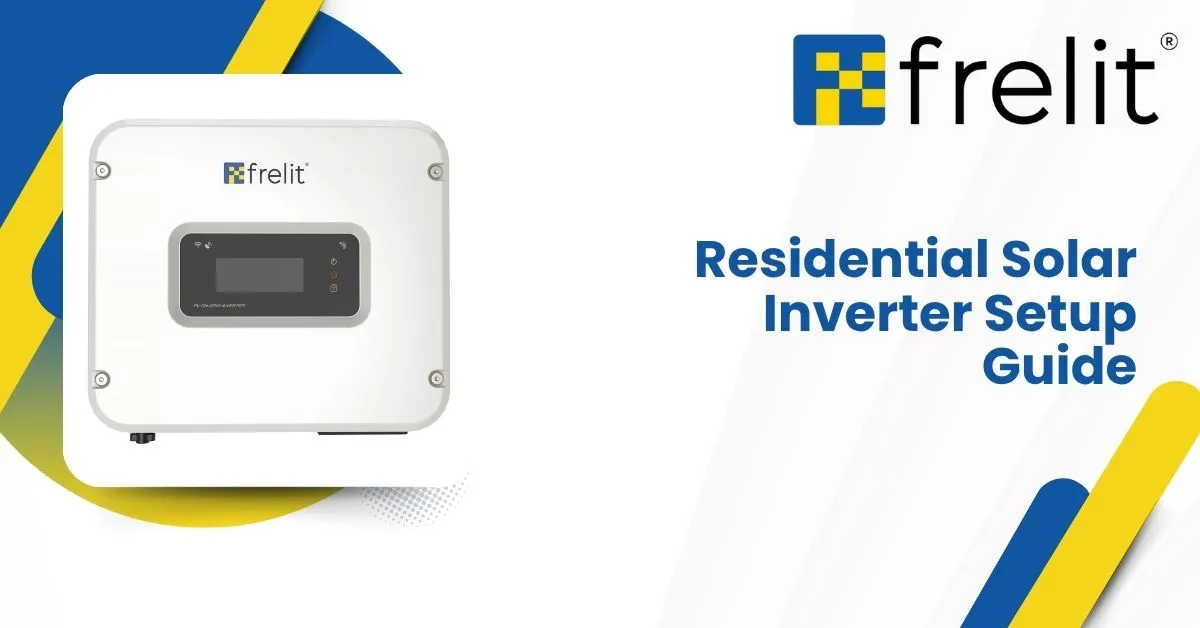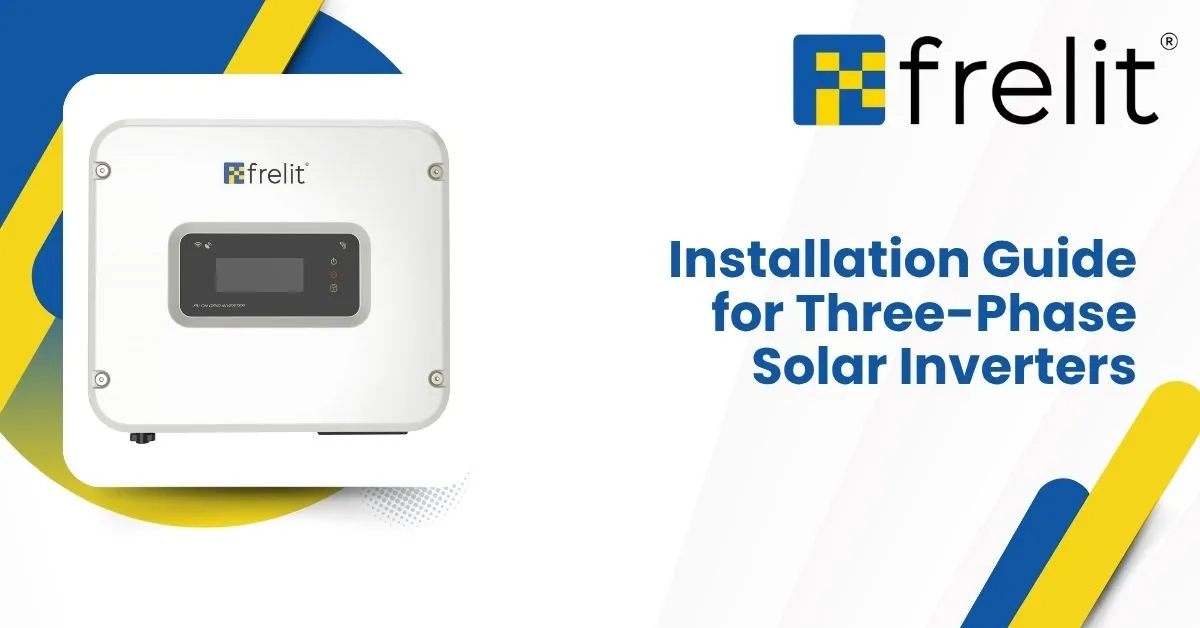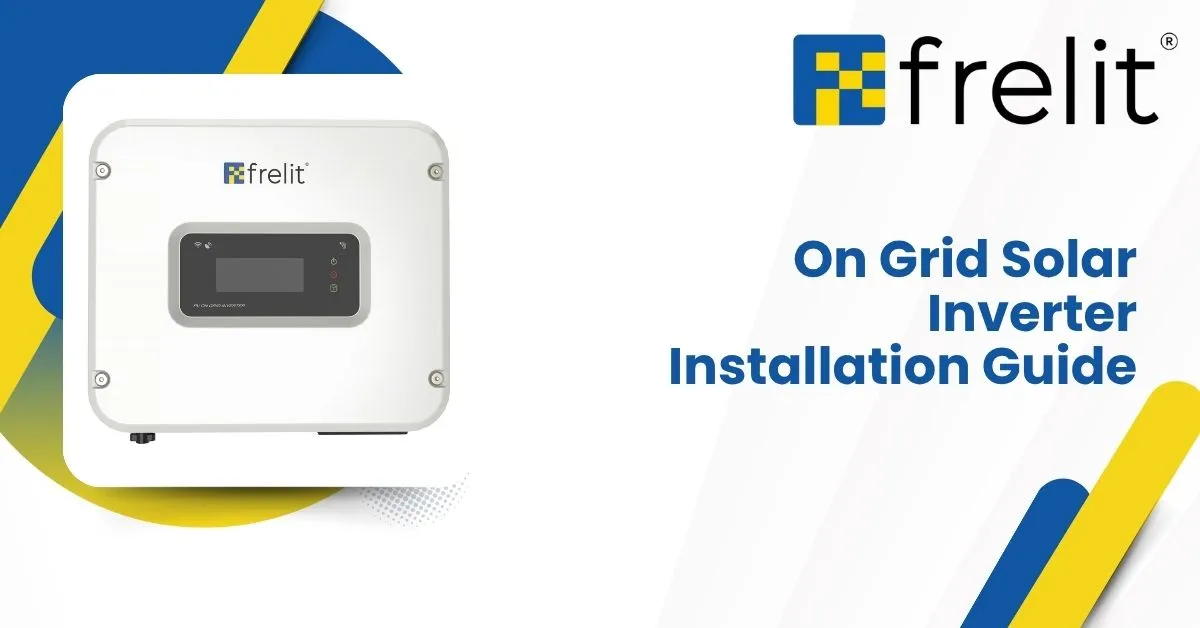
As solar energy adoption continues to grow across India, homeowners are increasingly turning to residential solar inverters to make their power consumption more sustainable and cost-effective. A solar inverter is the heart of any solar energy system, responsible for converting the DC (direct current) generated by solar panels into usable AC (alternating current) for home appliances.
In this comprehensive guide, we’ll walk you through everything you need to know about setting up a residential solar inverter, choosing the right model, and maximizing energy efficiency for your home.
What Is a Residential Solar Inverter?
A residential solar inverter is an essential device in your home solar power system that ensures the electricity produced by your solar panels can be used to power your household or be exported to the grid.
There are three main types of solar inverters used in homes:
- On-grid solar inverter – Connects directly to the main grid, allowing you to sell excess energy via net metering.
- Off-grid solar inverter – Works independently with a battery backup for areas without grid access.
- Hybrid solar inverter – Combines both grid connection and battery storage for maximum flexibility.
Choosing the right inverter depends on your energy consumption pattern, budget, and location.
Step-by-Step Residential Solar Inverter Setup Process
Here’s the step-by-step guide to properly setting up your solar inverter system for residential use:
1. Site Assessment and Planning
Start with a professional solar site evaluation to determine the best location for solar panels, inverter placement, and wiring routes. Proper planning ensures optimal sunlight exposure and inverter efficiency.
2. Mounting the Solar Panels
Install your panels on the roof at an ideal tilt angle (usually 25°–35° in India). The panels should face south for maximum sunlight capture.
3. DC Wiring from Panels to Inverter
Use high-quality solar cables to connect the solar panels to the inverter. This DC wiring step must follow safety and capacity standards to avoid energy losses.
4. Connecting the Inverter to the Grid or Battery
- For on-grid systems, connect the inverter to the main electrical grid using an AC distribution box.
- For off-grid or hybrid systems, connect it to your battery bank for power storage and backup use.
5. Grounding and Safety Check
Always ensure proper earthing and surge protection to safeguard against electrical faults and lightning strikes.
6. System Testing and Commissioning
Before turning on your solar inverter, test voltage levels and inspect all connections. Once verified, power up the system and monitor the inverter’s display for real-time performance.
Want to install a reliable residential solar inverter? Contact us today!
Benefits of Setting Up a Residential Solar Inverter
A well-installed solar inverter setup offers multiple long-term benefits:
- Reduced electricity bills through self-generated solar power.
- Cleaner energy usage contributing to a sustainable future.
- Higher ROI with government subsidies and net metering credits.
- Low maintenance with modern inverter technology ensuring durability.
Tips to Maximize the Performance of Your Solar Inverter
- Regular maintenance – Clean panels and inspect connections every 3–6 months.
- Use a monitoring app – Most smart solar inverters come with Wi-Fi or Bluetooth monitoring for real-time data.
- Install in a shaded, ventilated area – Keeps the inverter cool and extends its lifespan.
- Upgrade firmware periodically – Modern inverters often receive performance updates.
Choosing the Right Solar Inverter for Your Home
When selecting a solar inverter for home, consider:
- Capacity (kW) based on your daily energy needs.
- Efficiency rating – Higher efficiency means less power loss.
- Brand reliability – Trusted brands like Frelit Energy provide tested, durable models for Indian climates.
- Warranty and service support – Always opt for inverters with 5–10 years of warranty coverage.
Top Solar Inverter Models for Residential Use
Here are some popular inverter ranges to explore:
- FRELIT 3 KW – 6 KW Single-Phase On-Grid Inverters – Ideal for small to mid-sized homes.
- FRELIT 7 KW – 12 KW Three-Phase On-Grid Inverters – Perfect for larger residences with high energy demands.
These models combine advanced MPPT technology, smart monitoring, and grid synchronization to ensure maximum solar power utilization.
Why Choose On-Grid Solar Systems for Homes?
An on-grid solar inverter is the most cost-effective option for residential users. It allows homeowners to benefit from net metering, where excess solar energy is fed back into the grid and credited to your electricity bill. This system provides continuous power without needing batteries, reducing both initial costs and maintenance efforts.
Cost and ROI of a Residential Solar Inverter Setup in India (2025)
The solar inverter price in India (2025) depends on type, capacity, and brand.
On average:
- 3 kW–5 kW single-phase solar inverter: ₹35,000 – ₹75,000
- 7 kW–12 kW three-phase solar inverter: ₹80,000 – ₹1,50,000
With government subsidies and rising electricity tariffs, most homeowners recover their investment within 3–5 years, making it a profitable and sustainable decision.
Frequently Asked Questions
What is the ideal solar inverter size for a home?
The inverter should match 80–100% of your solar panel capacity. For example, a 5 kW solar panel system needs a 5 kW inverter.
How long does a residential solar inverter last?
Typically, solar inverters last 10–15 years with proper maintenance.
Can I run my home directly on a solar inverter during power cuts?
Only hybrid or off-grid inverters with battery backup can provide power during outages.
How much does a solar inverter cost in India in 2025?
Depending on capacity and type, prices range between ₹35,000 and ₹1.5 lakh.
How do I monitor my solar inverter’s performance?
Modern inverters feature smart monitoring apps that let you track power generation and efficiency in real-time.
Conclusion
Setting up a residential solar inverter is one of the smartest ways to achieve long-term energy savings, reduce electricity bills, and contribute to a cleaner planet. With advanced technologies like on-grid solar systems, smart monitoring, and MPPT efficiency, homeowners can now make the most of solar energy with minimal maintenance.


